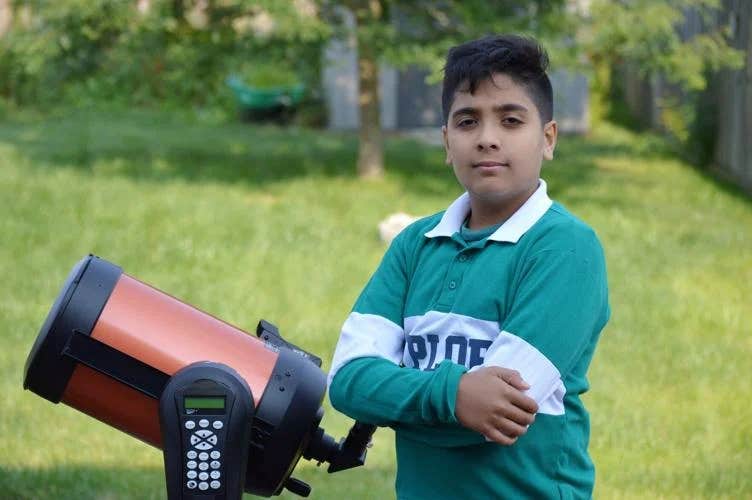AI helps doctors detect sepsis in kids before it becomes deadly
A new study shows that artificial intelligence can accurately predict sepsis in children up to 48 hours before symptoms become severe, offering new hope for early treatment and prevention.

 Edited By: Joseph Shavit
Edited By: Joseph Shavit

AI models can predict sepsis in children up to 48 hours early. (CREDIT: Epic / CC BY-SA 4.0)
Sepsis ranks among the deadliest illnesses a child can face. It’s an infection that spirals out of control, causing organ failure and often death. Every second counts. Yet in emergency rooms, doctors often rely on guesswork. A child may seem fine one hour and crash the next. Standard tests and clinical judgment can be too slow to predict the danger in time.
Researchers at Ann & Robert H. Lurie Children's Hospital of Chicago may have found a solution. They developed artificial intelligence algorithms that can help doctors spot sepsis earlier. These algorithms use data collected in the first few hours of a child’s emergency room visit. They predict which patients might develop sepsis within two days. Dr. Elizabeth Alpern led the study, marking a major step toward precision medicine in pediatric emergencies.
How the Study Came Together
The team examined electronic health records from over 2.3 million pediatric emergency visits. The children were between two months and 18 years old, across five large health systems. The study excluded trauma cases, transfers, deaths, and visits with known sepsis. Researchers focused on children who appeared stable but later developed severe infections.
They trained the AI using data from 2016 to early 2020, then tested it using 2021–2022 data. The system analyzed vital signs, triage urgency, age, medical conditions, and other early clinical information—data normally available within four hours of arrival. Researchers defined sepsis using the Phoenix Sepsis Criteria, which combine suspected infection and organ dysfunction. They tracked which children developed sepsis or died within 48 hours.
The results were remarkable. The simpler logistic regression model achieved an AUROC score of 0.92. The advanced “gradient tree boosting” model reached 0.94. In plain terms, both models were highly accurate in spotting high-risk children.
Even in cases of septic shock—the most severe form—the accuracy stayed above 0.92. The models’ positive likelihood ratios ranged from 4.67 to 6.18. That means a “high-risk” result strongly signals a real threat. The models worked well across all races, genders, and ages. Only insurance type showed a small difference: predictions were slightly more accurate for Medicaid patients. Researchers plan to study that further.
What Drives the Predictions
These AI tools didn’t rely on mysterious “black box” logic. The most influential factors were triage seriousness, heart rate, blood pressure, and chronic conditions. By analyzing these details together, the algorithms uncovered warning patterns that human eyes might miss.
“The prediction models we created are a giant leap forward to precision medicine in kids with sepsis,” said Dr. Alpern, who heads Lurie Children’s Division of Emergency Medicine and teaches at Northwestern University. “The models had good balance in being able to capture kids in the ED who will end up developing sepsis, without over-catching kids who are not at risk.” She added that unnecessary aggressive treatments could be avoided with more precise predictions.
Why This Matters for Emergency Care
Emergency departments are chaotic and time-pressured. Doctors must make life-or-death decisions within minutes. A system that scans EHR data in real time and flags high-risk children could change pediatric care. Instead of reacting after organs fail, doctors could act earlier—ordering labs, starting antibiotics, or arranging intensive care sooner.
Dr. Alpern emphasized that AI should not replace human judgment. “We tested our models to ensure that there were no biases,” she said. “Future research will need to combine EHR-based AI models with clinician judgment to make even better predictions.” The system’s goal is to enhance, not override, clinical expertise.
The research, funded by the National Institute of Child Health and Human Development, has limits. The data came from large, well-equipped hospitals. Smaller or rural facilities may not see the same results. The models also relied on past cases, not real-time hospital trials. Researchers still need to confirm results in live settings.
Integrating the technology smoothly into daily workflows poses another challenge. Too many alerts could cause “alarm fatigue,” making staff ignore critical warnings. Differences in data quality or patient populations could also skew results. Still, the promise is clear. Predicting sepsis before symptoms explode could save lives and reduce suffering for families and health systems alike.
What It Means for Families
For parents, it may sound like science fiction that a computer can foresee sepsis. But the purpose is deeply human: preventing tragedy. The AI helps doctors detect what they might otherwise overlook, giving each child a better chance at early treatment.
Sepsis can worsen in just hours. If AI flags the danger early, fewer children may need intensive care. The models’ accuracy offers real hope that such technology will soon enter routine emergency care. The research is still ongoing. Doctors continue to rely on experience and patient context. Yet as AI evolves, the gap between human intuition and data-driven insight may shrink—in a good way.
Symptoms of Sepsis in Children
Symptoms of sepsis can look like other common illnesses depending on the underlying infection and the severity of the condition. Some common symptoms may include:
- Getting sicker fast
- Fever of 101.5 or higher
- Low blood pressure
- Fast heart rate
- Shortness of breath or trouble breathing
- Irritable or confused
- Vomiting or diarrhea
- Less interest in playing or feeding
Always consult your doctor or other qualified healthcare provider with any questions you may have regarding a medical condition, procedure, or treatment, whether it is a prescription medication, over-the-counter drug, vitamin, supplement, or herbal alternative.
Research findings are available online in the journal JAMA Pediatrics.
Related Stories
- New AI model revolutionizes medical imaging with 90% less computing power
- AI-powered CRISPR technology turbocharges gene therapy development
- UPenn researchers use AI to create next-generation antibiotics
Like these kind of feel good stories? Get The Brighter Side of News' newsletter.
Shy Cohen
Science & Technology Writer
Joseph Shavit
Science News Writer, Editor-At-Large and Publisher
Joseph Shavit, based in Los Angeles, is a seasoned science journalist, editor and co-founder of The Brighter Side of News, where he transforms complex discoveries into clear, engaging stories for general readers. With experience at major media groups like Times Mirror and Tribune, he writes with both authority and curiosity. His work spans astronomy, physics, quantum mechanics, climate change, artificial intelligence, health, and medicine. Known for linking breakthroughs to real-world markets, he highlights how research transitions into products and industries that shape daily life.



